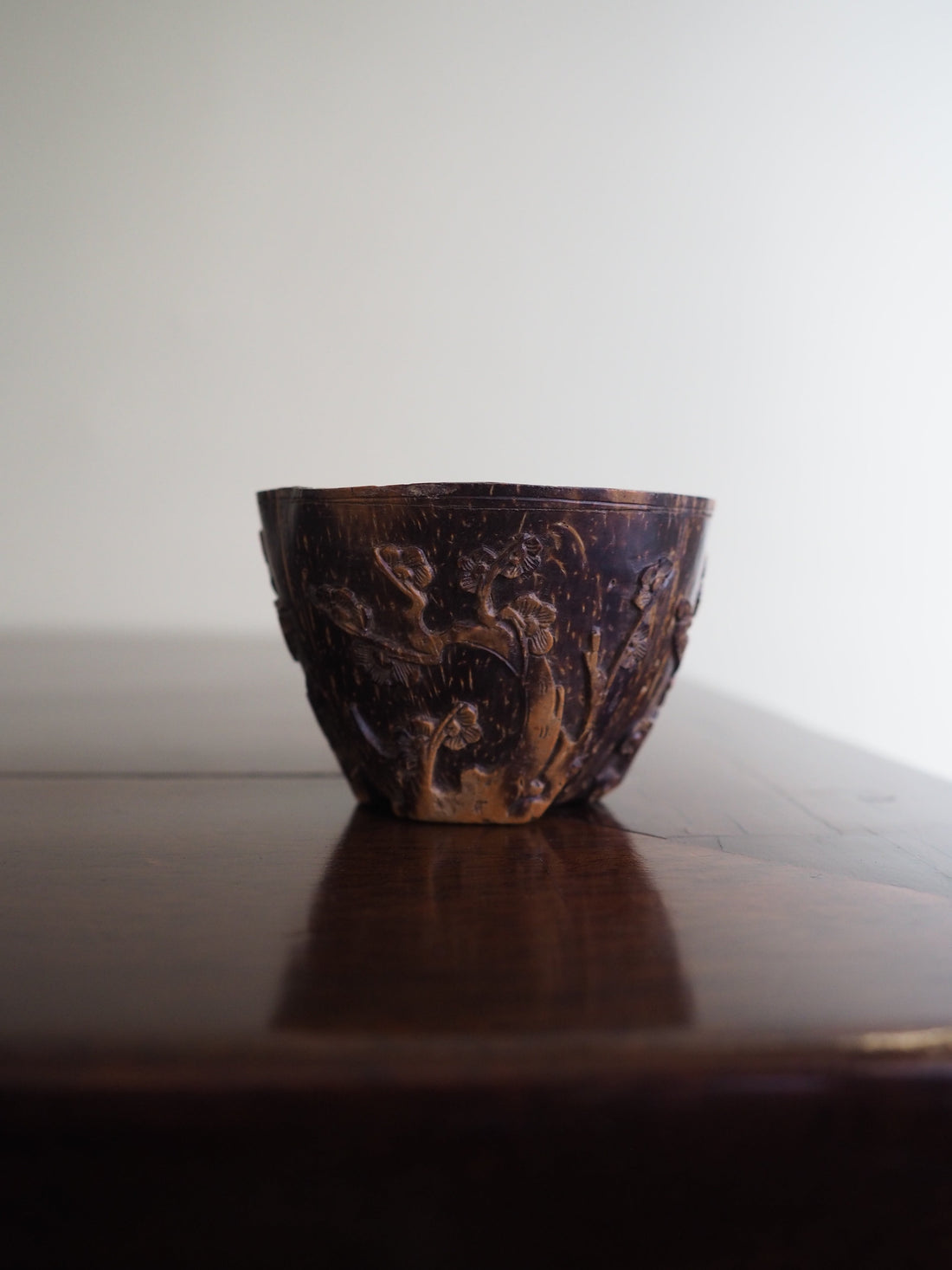The Fascination of Chinese Coconut Cups: Nature, Art, and Symbolism

Share
The Fascination of Chinese Coconut Cups: Nature, Art, and Symbolism
Among the many treasures of Chinese decorative arts, coconut cups occupy a particularly intriguing place. At first glance, they may appear modest – simple vessels carved from the shell of a tropical fruit. Yet, upon closer inspection, they reveal an extraordinary blend of craftsmanship, symbolism, and rarity that makes them highly desirable for collectors.
From Nature to Art
Coconut carving in China flourished during the Ming and Qing dynasties. Craftsmen transformed humble coconut shells into refined works of art, often turning them into libation cups, brush pots, or small decorative bowls. The dense and fibrous surface of the coconut provided a rich, warm material that could be intricately carved with landscapes, figures, and symbolic motifs.
Unlike porcelain or jade, coconut as a material is far less durable. This fragility means that relatively few examples have survived the centuries, adding to their rarity today. To own an intact coconut cup from the Kangxi period (1662–1722) is therefore a privilege.

The Symbolism of the Three Friends of Winter
One of the most admired decorative themes found on coconut cups is the “Three Friends of Winter” (pine, bamboo, and plum). These plants are celebrated in Chinese culture for their ability to endure the harshness of winter, symbolizing resilience, steadfastness, and renewal.
-
Pine represents longevity and endurance.
-
Bamboo embodies integrity and flexibility.
-
Plum blossom is admired for blooming in the coldest season, a metaphor for hope and perseverance.
Together, they were a favored subject in classical Chinese art and literature, and their presence on a fragile coconut vessel enhances both its cultural and artistic value.
A Rare Survivor: My Kangxi Coconut Cup
The coconut cup in my collection is a rare survivor of the Kangxi period, standing just 4 cm high and 5.5 cm wide. Its small size belies the sophistication of its carving: a finely detailed depiction of the Three Friends of Winter encircles the cup, a timeless reminder of nature’s strength and harmony.
What makes this piece especially remarkable is its excellent state of preservation. Many coconut vessels have not withstood the test of time, often showing cracks, chips, or heavy wear. To find a Kangxi-period example in top condition is exceptional.
Collecting and Legacy
Chinese coconut cups are increasingly recognized as objects of both artistic and scholarly interest. They represent the ingenuity of Qing artisans who elevated natural materials into works of symbolic beauty. For collectors, the rarity of well-preserved examples makes them highly sought after, especially when adorned with classic motifs such as the Three Friends of Winter.
Owning such a piece is not only about possessing a decorative object it is about holding a fragment of cultural history, carved more than three centuries ago, yet still radiating the poetic values of Chinese tradition.
